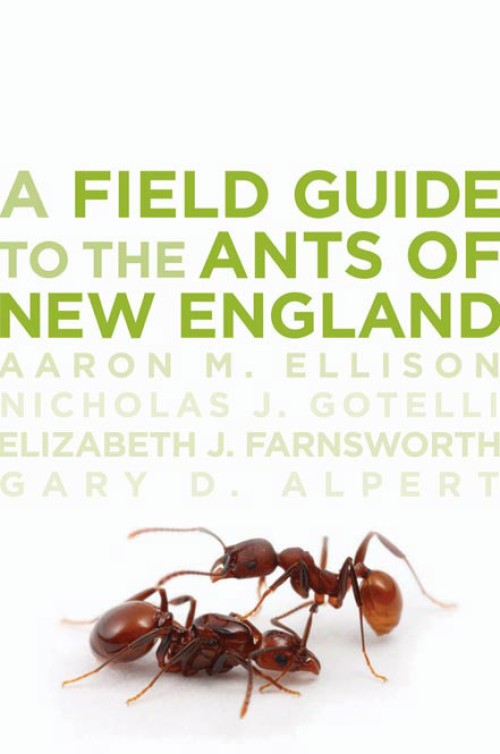by Aaron M. Ellison, Nicholas J. Gotelli, Elizabeth J. Farnsworth, and Gary D. Alpert
Yale University Press, 2012
Authors and publishers of field guides, take note: the bar has gone up with A Field Guide to the Ants of New England.
Ants?
Ants. Lilliputian ants whose entire colony is enclosed in an acorn, ants that parasitize other ant species, ant mimics, and other insects that find room and board in ant nests. The tiny lives of New England’s 132 species could be the stuff of children’s books or action movies.
The Guide includes everything you’ve ever wished for in a field guide: unforbidding keys with an illustration whenever you need one, fascinating natural history information, a macro-photo and an illustration of each species, a photo of the species’ typical habitat, a shorthand indication of distinguishing features, and an occasional laugh.
The structure of the book works extremely well. Concise, well-written introductory chapters put ants into a landscape context, discuss their evolution, ecology, and behavior, and explain how to identify, observe, collect, draw, and photograph ants. You’ll need all of these skills because the book makes you want to do them all. Its only undesirable characteristic is its weight. However, since it opens a whole new universe right under your feet and is a pure pleasure to look at, this doesn’t seem like an inconvenience.
There are keys to subfamilies (that’s where I’ll be starting), genera, and species. They are a joy to use. Almost every trait is illustrated in the margin (big enough to see, too), and the keys are written as a sort of reverse glossary. They use simple English descriptors with technical terms in parentheses, so you don’t need to flip to the back of the book every other minute because you’ve forgotten exactly what “spatulate” means. In addition to the standard dichotomous keys, there is a matrix key.
Whoever thought this one up should be designing car radios. It is a visual key that illustrates the body shape, color, and relative size of all of the species in a genus, along with close-ups of their distinguishing features.
The authors are specialists in entomology with wide-ranging interests in ecology. Where expertise could have made them pedantic, they come across instead as personal and passionate. Elizabeth Farnsworth’s illustrations are exquisite and abundant and must be worth a total of a million words. Speaking of words, one of the nicest features is that each Latin name is translated, and each genus and species is assigned a popular name based on a distinctive character or behavior. If you can’t remember Paratrechina, for example, you may recall The Somewhat Hairy Ant, and when you find an ant nesting in a boreal bog, you’ll surely remember The Leptothorax of the Moss, and so find your way to Leptothorax sphagnicola.
Where have ants been all my life? “The world is so full of a number of things, I think we should all be as happy as kings,” said Robert Louis Stevenson in A Child’s Garden of Verses. He probably would have liked this book. Oh, yes. E.O. Wilson liked it too.


